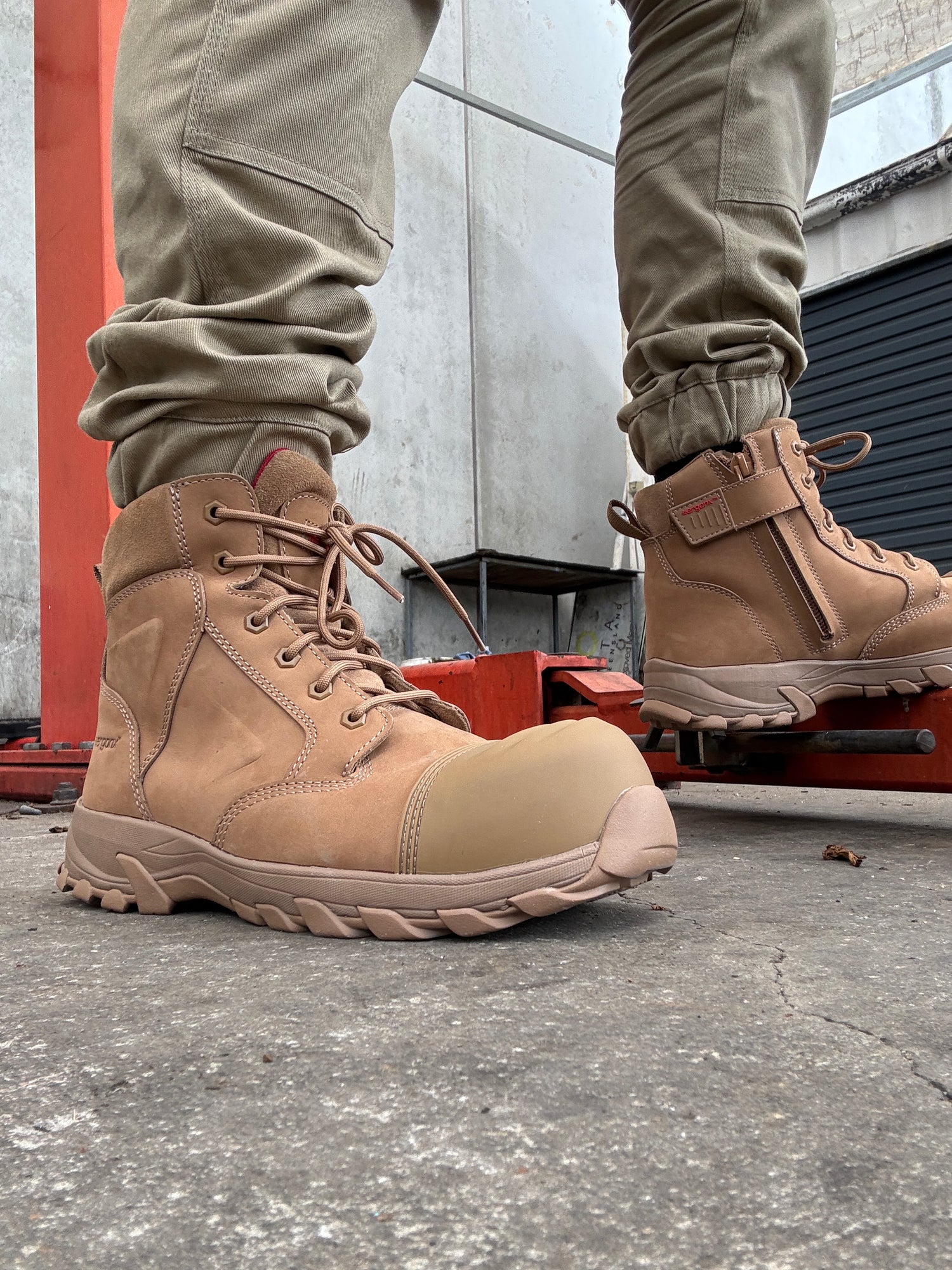Fitting a Custom-Made Orthotic into a Work Boot
HOME / ORTHOTICS / Fitting a Custom-Made Orthotic into a Work Boot
Today, we are responding to a question that was submitted by one of our customers, Paul. After an assessment by his podiatrist, it was suggested to Paul that he would benefit from a pair of custom orthotics and a well-fitting pair of work boots. Paul is wondering what the aspects of a good work boot are and how they work with a custom orthotic to help his foot problems.
So to start, we thought it would be a good idea to talk about what custom orthotics are and how they may help a patient.

What are custom orthotics?
Medical professionals prescribe custom orthotics as shoe inserts to address the specific needs of an individual’s feet. They create these orthotics after thoroughly assessing the person’s feet and considering factors such as foot structure, arch, gait, and any existing foot conditions.
Custom orthotics differ from off-the-shelf options as they are personalized and tailored to align with the individual’s unique foot. They can be crafted from various materials like foams, plastic, or composites, and their shape is designed to provide support and additional cushioning.
Custom orthotics may treat these conditions
There are several reasons why a healthcare professional may recommend a custom orthotic. Here are some common reasons:
- To alleviate foot pain
- To correct foot and gait abnormalities
- To enhance sport performance
- To support and promote healing
- For post-injury or post-surgery support

What are the qualities of a good-fitting work boot
Next, let’s talk about work boots. When it comes to work boots, a quality pair of good-fitting work boots are crucial for the safety, comfort, and well-being of workers. Not only do they provide necessary protection against hazards and present injuries, but they offer the support needed to stay comfortable and pain-free on the job.
Choosing the right boots should be a priority for both employers and employees to ensure the safety and health of everyone on the job site.
Here are some characteristics of a good work boot:
- It bends where it needs to – Work boots should only bend where your foot naturally bends, at the ball of the foot. Otherwise, your muscles and other structures will be working harder than they need to keep the foot aligned. Limited bending and twisting help to reduce foot fatigue. It also promotes the most efficient energy transfer through your foot during walking and other physical activities.
- It has a shock-absorbing midsole– The midsole acts as a cushioning layer between the outsole (bottom of the shoe) and the insole (inner sole that touches the foot).
- Laces with an inner zipper – Laces are customizable and can be adjusted to fit different foot shapes. This versability gives the wearer a snug and secures fit.
- Enough room to fit an orthotic – It’s crucial to have enough room in your shoes to accommodate an orthotic. In addition to choosing the correct boot size, ensuring sufficient space in the toe box and heel is important. If there isn’t enough room, it can lead to foot pain, discomfort, and blisters.
Some final thoughts
It’s worth noting that different types of work boots offer varying degrees of flexibility, safety features, and mechanics. If, like Paul, you are on the hunt for a new pair of work boots, carefully consider your needs and work environment as you make your selection.
Consult with a reputable healthcare professional. They can make informed recommendations on the type of footwear that is best suited for you. You take the time to try a series of boots before investing. Trust us, it’s worth it.
If you have any questions regarding orthotics, foot pain, or overall foot health, feel free to comment below! You can also reach out to our team at docpods.com/au!


